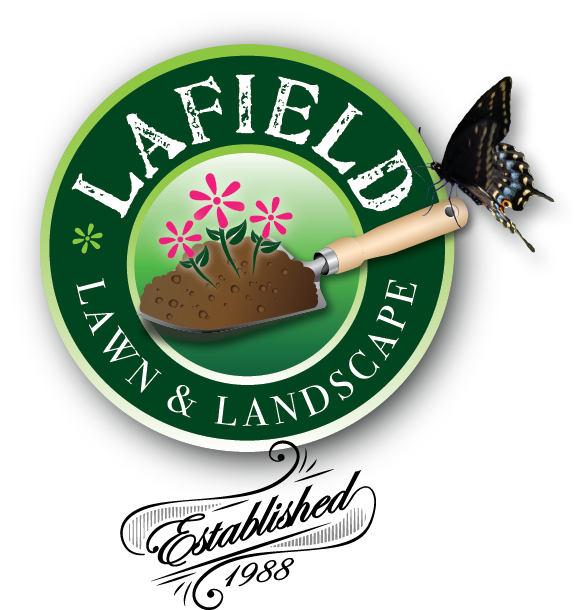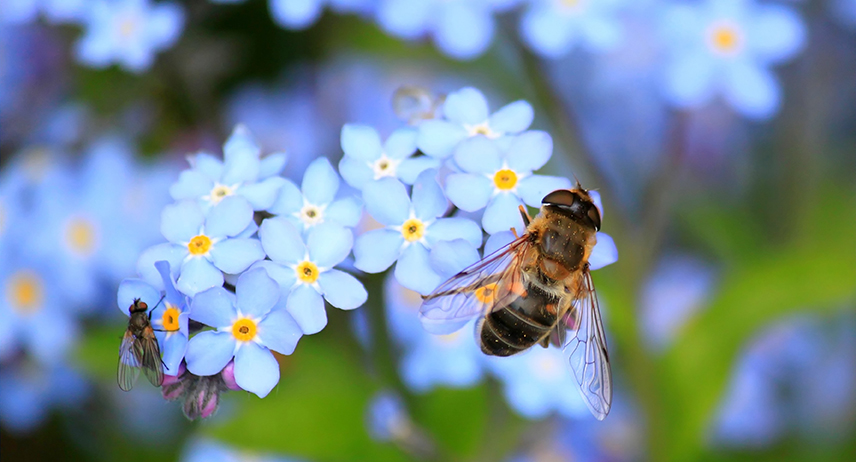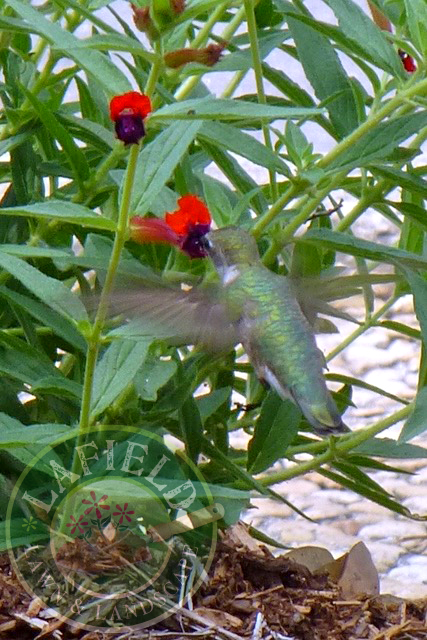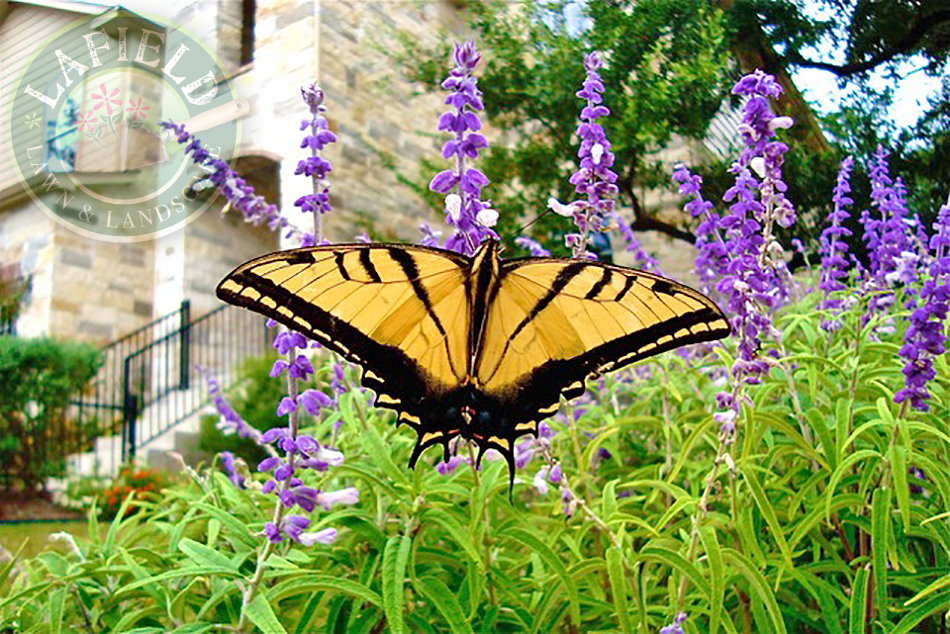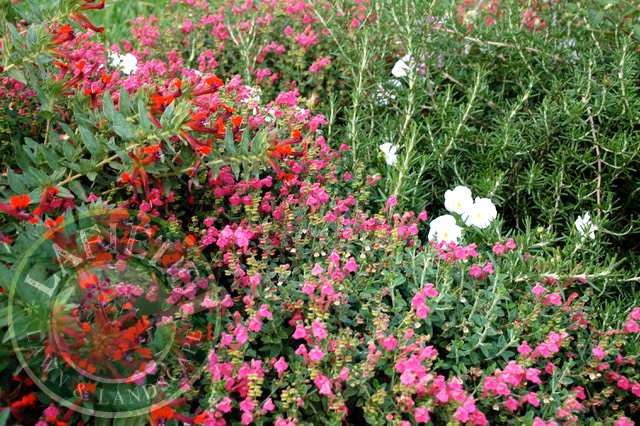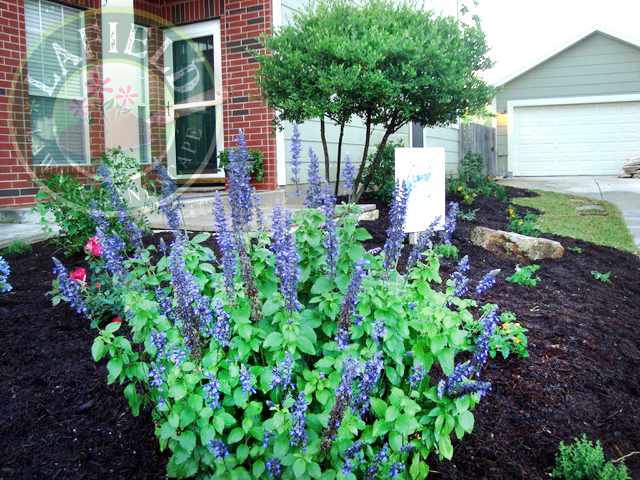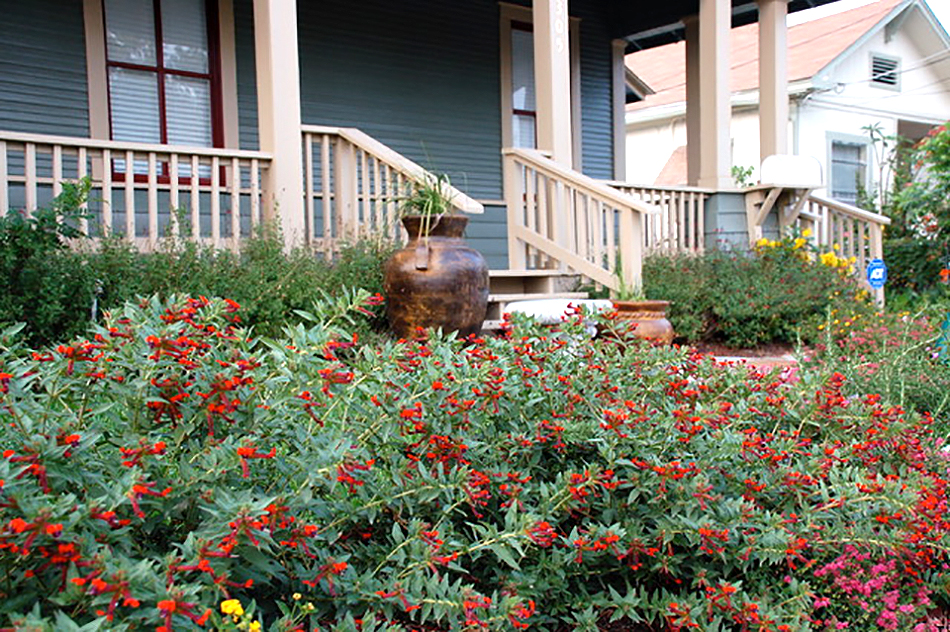Curbside Buffet
One of the many benefits of being a landscaper is that we are often accompanied by some of nature’s hardest workers. As we go about our business butterflies, birds, and bees fly swiftly through the air to snack on the nectar hidden within each brightly colored flower within the landscape. Without a second thought, these critters are performing one of nature’s greatest tasks, the task of pollination.
Pollination occurs when a plant’s “male” reproductive cells, called pollen, travels down the narrow stigma to fertilize the “female” egg. This allows the flower to produce the seeds necessary for new plants. Pollination can occur through wind and water, however, there are 250,000 plants that need the specific help of pollinators. Without their aid many plants simply can not reproduce. Among the best pollinators are butterflies, birds, small mammals, and of course honey bees.
It is no secret that in recent years many pollinators have been on the decline. This effects not only the ecosystem that they live in, but it has a tremendous effect on us as well. Much of our food comes from these precious pollinators. In fact many researchers believe that approximately 1 out of every 3 bites of food exists because of them. Honey bees alone are responsible for the fertilization of over $100 million of crops in the United States each year. The source of their decline: urbanization, the use of harmful pesticides, pollution among various man made factors. The future seems bleak for these hard workers. So what can we do to help? The answer may be found in your backyard.
Pollinator gardens are gardens specifically designed with pollinators in mind. Carefully selected Texas native plants are handpicked to provide an optimal food source and habitat for these flying fellows year round. So how do you create one?
How to Create Your Pollinator Garden
Step 1. Choose a location
Many insects enjoy being in full sun. Creating your garden in an open area with lots of sunlight is ideal for butterflies and bees.
Step 2. Prep the ground
This is among the hardest steps. Knowing your soil type is extremely important. You can find out what type of soil you have at websoilsurvey.nrcs.usda.gov. If you have poor soil, it may be necessary to apply fresh organic rich soil that can be found at your local landscaping store. It is also best that an irrigation system is installed.
Step 3. Choose the plants
We always recommend using Texas native plants. Fortunately, there are a wide variety of colorful flowering plants to choose from. When choosing your flowers, include a range in types, shapes and sizes. Careful planning and you will have a succession of flowers throughout the growing season, which provides continued sustenance to the pollinators.
Step 4. Plant
The proper placement of your plants will not only get your plants off to a great start, but it will also give it the best chance at staying healthy. Overcrowding will cause the plants to compete for sunlight, while too much space will provide a location for unwanted weeds to sprout up. Grouping certain flowers of the same kind in large drifts is recommended.
Step 5. Mulch
Adding mulch to your garden provides nutrients, cushions large temperature fluctuations, and helps with water retention. Don’t skip this step. Although it’s another additional cost, it could save you from losing plants and having to replace them.
Step 6. Maintain
Watering, pruning, and weeding are all necessary to maintain. Try not to use harmful chemicals that can do exactly the opposite of what these gardens are designed to do.
Having pollinators in your garden is an excellent sign of a healthy ecosystem and although it may take getting your hands dirty, the fruit of your labor will be well worth it. Here at LaField we are passionate about our pollinators. If you would like us to help create your curbside buffet, call us today!
